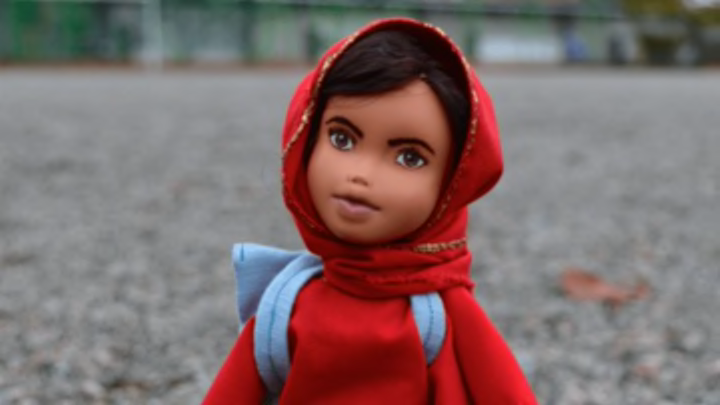Store-bought dolls these days have a certain sameness to them. Despite variations in hairstyle or shade of lipstick, choosing between Barbies on the shelf can be a process that comes down to such insignificant considerations as which one's shoes are trendiest. Based on a personal belief that toys can have significant impact on a child’s self-image, artist Wendy Tsao made it her mission to take those off-the-shelf dolls—in this case, figures from the controversial Bratz brand—and turn them into positive symbols of female inspiration and empowerment, rather than just “Girls with a Passion for Fashion.” The end result is a series of “Mighty Dolls”—playthings with something to be proud of.
Tsao didn't originally set out to design a line of role models with movable limbs. Inspired by the work of Sonja Singh, who had earlier released a series of doll "make-unders," Tsao simply wanted to play with the process herself to see what she could do with the mass-produced figurines. An earlier post on her website features her first set of "refurbished" dolls, scrubbed of their heavy makeup to better resemble the young girls who might want to play with them. These earlier dolls come with everyday names like Abby, Carina, and Emma, and each has her own mini-biography penned by Tsao.
Abby, for example, gets in trouble for reading under the covers when she should be sleeping, and Bella wants to study dolphins when she grows up. Even in Tsao's first foray into repainted dolls, she demonstrated a latent desire to show them not only as relatable, but admirable.
It wasn't a far leap, then, from Tsao's real-world dolls to her "Mighty Dolls," modeled after real women made famous by their various accomplishments. A post on Tsao’s website features an international cast of respected women, from Canadian astronaut Roberta Bondar to Pakistani activist and Nobel Prize laureate Malala Yousafzai, each with her own distinctive outfit and accessories. The J. K. Rowling doll features a knit scarf in Gryffindor’s signature colors, and Jane Goodall is shown with a cuddly primate posed by her feet. There are certainly no complaints to be made about sacrificing style for substance here. By Tsao’s account, these are “real-life people who are heroes too, with inspiring stories of courage, intelligence, strength, and uniqueness,” well suited to raise the tone of playtime. Her repainted, re-costumed dolls mimic the features of these grown heroines, but Tsao strives to portray even the older women as young girls, to reflect the dolls’ target audience (the exception being Malala, a heroine nearly young enough to still have dolls of her own).
A mother herself, Tsao says she would be thrilled to have her child play with these dolls and “have conversations about them,” taking into consideration not just their appearances, but their accomplishments as well.
